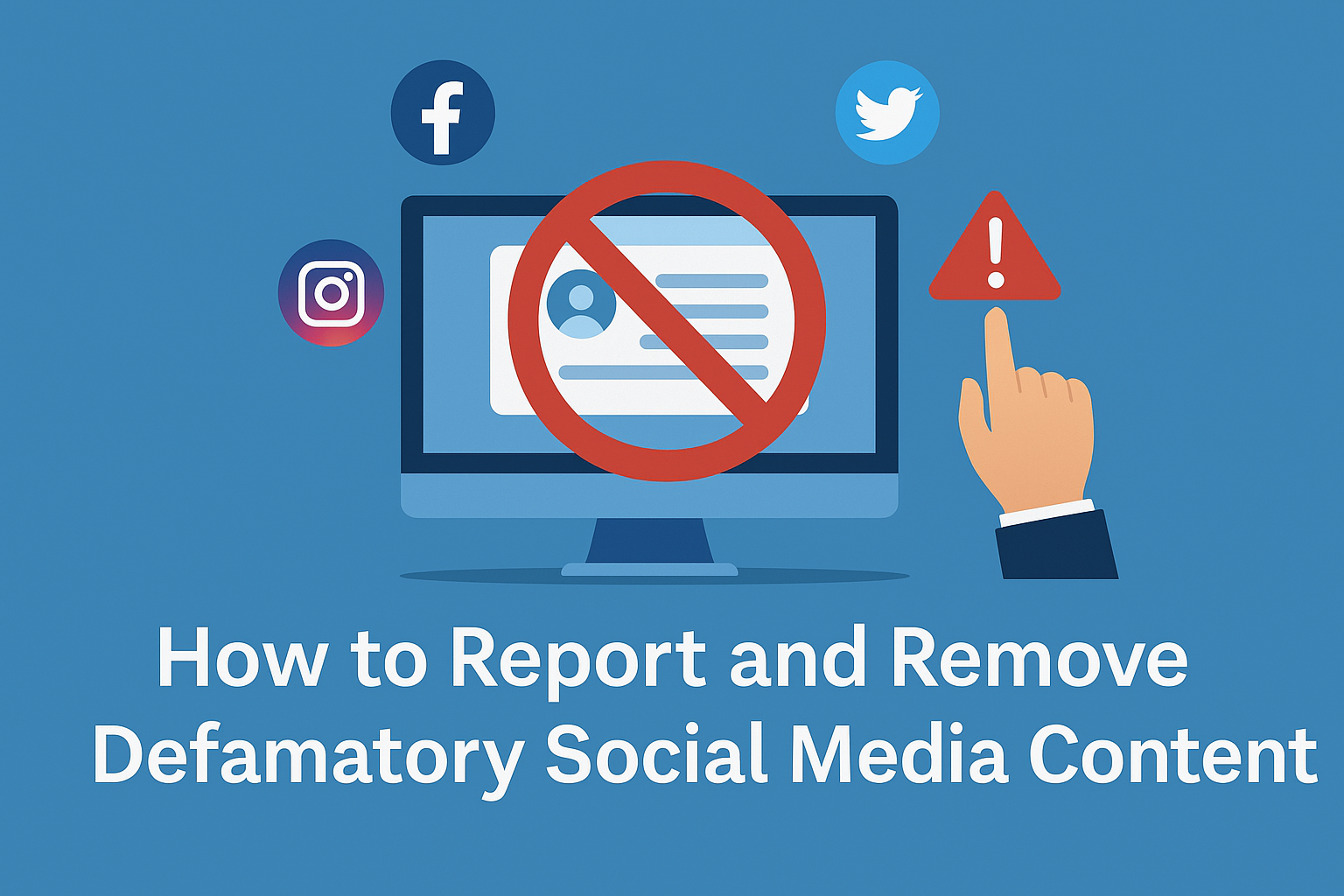Estimated reading time: 3 minutes
Table Of Content
Understanding Defamation on Social Media
Defamation is the act of making a false statement that damages a person’s reputation. On social media, defamatory posts can appear in the form of:
- False accusations
- Fake reviews
- Edited images or screenshots
- Malicious tagging or impersonation
These posts can quickly go viral, making swift action critical to minimize reputational harm.
What Qualifies as Defamatory Content?
To take down defamation online, the content must typically meet these criteria:
- The statement is false
- It is presented as fact, not opinion
- It was published to at least one other person
- It caused reputational or emotional harm
Step-by-Step Guide to Report Defamation on Social Media
1. Document the Evidence
Before reporting, take screenshots of the defamatory post including:
- Timestamps
- Usernames or profiles
- URL links
- Comments and replies
Use tools like Wayback Machine to preserve deleted content.
2. Use the Platform’s Reporting Tools
Each platform has a reporting mechanism to flag harassment or false claims:
- Go to the post > Click the three dots > Select “Find support or report post” > Choose “Harassment” or “False information”
- Facebook Help Center
- Tap the three dots above the post > Report > Select “False information” or “Harassment”
Twitter (X)
- Click on the tweet > Click three dots > Report Tweet > Select “It’s abusive or harmful”
- Twitter Safety Center
TikTok
- Tap the share icon > Report > Choose reason (e.g., harassment, misinformation)
YouTube
- Click the three dots next to the comment or video > Report > Select the appropriate reason
3. Contact the Platform Directly (When Possible)
Some platforms allow legal inquiries or escalations through:
- Legal support forms
- DMCA takedown notices (for copyrighted material)
- Terms of Service violations
Look for platform-specific contact pages, such as:
When Reporting Isn’t Enough: Legal and Removal Options
If reporting fails or the platform refuses to act, additional measures may be necessary.
File a Cease and Desist Letter
A formal notice demanding removal of the content and cessation of defamatory behavior. This is often enough to prompt removal by the individual.
Request a Court Order
With sufficient proof, you can obtain a court order that compels:
- The individual to delete the content
- The platform to take down the defamatory material
Work with a Reputation Management Expert
Some content may persist on third-party forums or archived pages. Professionals can:
- Suppress defamatory posts in search engines
- Push positive content to page one
- Monitor new defamatory mentions
“Falsehood flies, and the truth comes limping after it.” — Jonathan Swift
How Defamation Defenders Can Help
At Defamation Defenders, we specialize in:
- Identifying defamatory material across platforms
- Preparing evidence for legal use
- Sending takedown and cease and desist notices
- Engaging with platforms and attorneys for removal of defamatory content
- Repairing your online reputation with expert SEO suppression
📩 Schedule Your Confidential Case Review to start reclaiming your name today.
FAQ: How to Take Down Defamation Online
Only the person who made the post or the platform can delete it. You can report it and request action.
Subpoenas can reveal IP addresses and account ownership for legal action.
Platform removals vary from a few hours to several days. Legal takedowns may take weeks.
It depends on the platform’s policies. Still, persistent reporting and legal pressure can lead to results.
While no one can guarantee removal, we provide the best chance of success through legal, ethical, and strategic approaches.
If you liked this article, you might also enjoy these posts from our blog:



